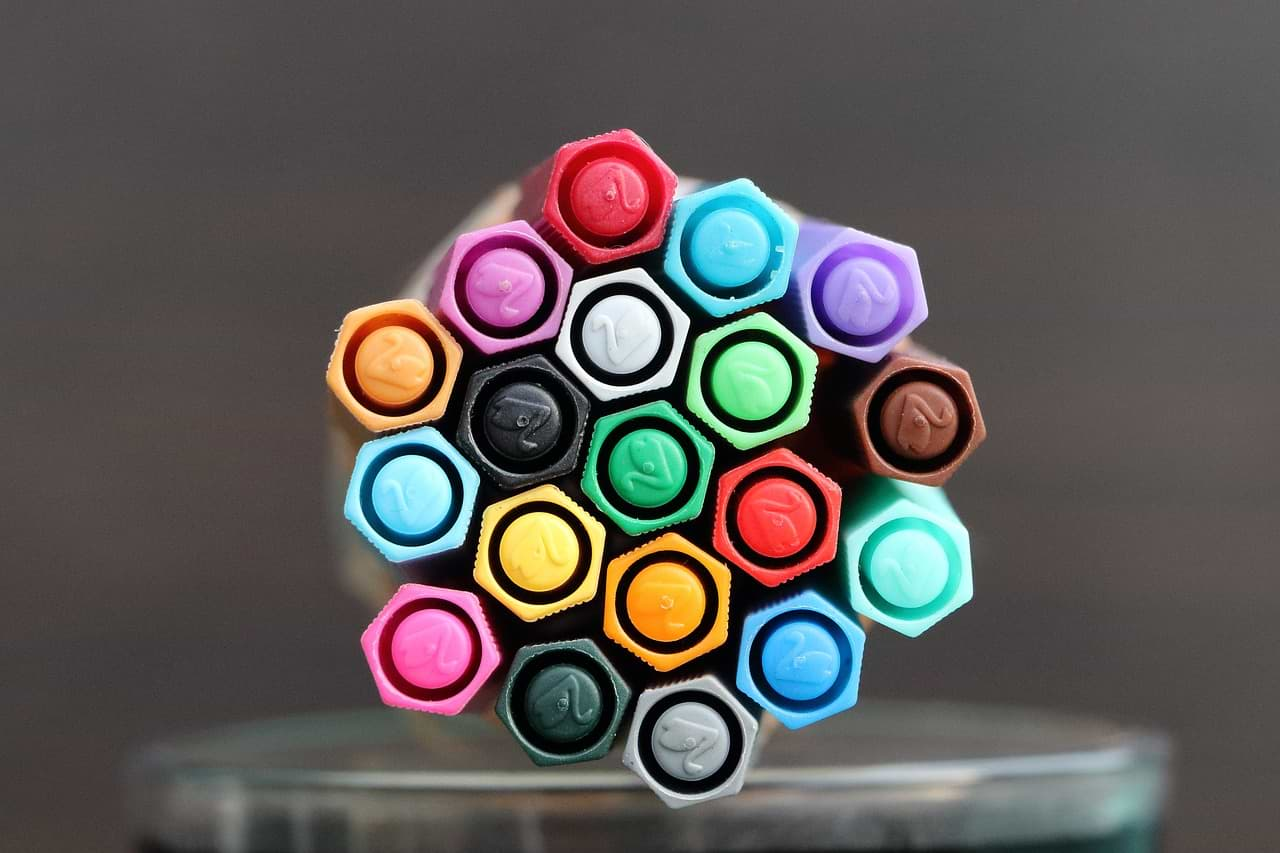Creative expression is seeing a marked shift towards using canvas for artwork printing. This trend, steeped in the tradition of fine art, provides a textured, three-dimensional look and feel that adds depth and life to digital designs.
Canvas printing allows artists to present their work in a more tangible medium and facilitates the recreation of the tactile details of traditional painting. Moreover, the durability and longevity of canvas, combined with its classic aesthetic appeal, make it an alluring choice for artists and art enthusiasts. Every artist needs to learn how to print on canvas as the canvas printing revolution is truly opening up new avenues for creative expression, blending the worlds of traditional and digital art uniquely and excitingly.
This article aims to serve as a comprehensive guide for artists navigating the emerging world of canvas printing. It will provide step-by-step instructions on the canvas printing process, insights into leveraging this medium to enhance your digital designs, and practical tips to ensure the longevity and quality of your prints. Whether you’re an experienced artist seeking to diversify your portfolio or a beginner ready to take your first step into the art world, this guide will empower you to bring your unique creativity to life in a tangible, enduring, and visually captivating manner.
I. What is A Canvas Print?
A canvas print is an image printed onto canvas fabric using a large-format printer. Due to its versatility, durability, and aesthetic appeal, canvas printing has become increasingly popular with artists, photographers, and interior designers. The process involves transferring a digital image onto the canvas using advanced printing technology. This results in a high-quality reproduction of an artwork or photograph that closely resembles a traditional painted canvas. The final product is then stretched onto a wooden frame, creating a ready-to-hang piece of art.
II. The Benefits of Printing on Canvas
Printing on canvas can grant you various benefits as an artist. Here’s a look into each benefit and how it can stand out when compared to traditional art mediums.
A. Popularity of Canvas Prints: Supported by Statistics
The global art market is now worth over $67 billion, and a survey conducted by the Art Business Institute (ABI) indicates a significant rise in sales due to the popularity of canvas prints. The study found that in 2020, 67% of artists were selling canvas prints, up from 55% in 2015. This growth in popularity is attributed not only to the aesthetic appeal of canvas prints but also to their cost-effectiveness and durability.
Furthermore, a 2019 report by Market Research Future projects that the global wall décor market, which includes canvas prints, will grow at a CAGR of 2.3% between 2020 and 2025. This growth is partly fueled by consumers’ rising popularity of personalized or customized wall décor, with canvas prints being favored.
Artists and consumers increasingly embrace canvas prints, and these statistics only underscore the trend. Whether it’s the charm of a textured finish that canvas prints provide or the ability to recreate the artist’s original brush strokes, the rise in popularity of this medium is palpable and here to stay. Another reason this art form is here to stay is because it has distinct advantages over traditional art forms.
B. Advantages of Canvas Printing Over Traditional Art Mediums
The shift from traditional art mediums to canvas printing offers numerous advantages. Unlike paper prints, canvas prints provide a more tangible, textured surface that can closely mimic the look and feel of original paintings. This textured appearance can add depth and dimension to digital art, transforming a flat image into a more immersive, tactile experience.
Canvas prints are also known for their durability. They resist many factors that can deteriorate paper prints over time, such as moisture and UV light. This allows for an extended lifespan of the artwork, preserving the color and detail for years to come.
In addition, canvas prints are generally more affordable than traditional art mediums. The cost of materials and the process of creating a canvas print are often less expensive than those associated with traditional painting. This cost-effectiveness allows an artist to produce and sell high-quality reproductions of their work at a more accessible price point, broadening their potential audience and market reach.
Lastly, canvas prints allow for more customization than traditional art mediums. Artists can easily manipulate digital designs, experimenting with color, size, and composition before committing to a final print. This flexibility can spark creativity, enabling artists to adapt and evolve their work in ways not possible with traditional media.
Overall, canvas printing offers artists a unique blend of texture, durability, affordability, and customization, making it an increasingly popular choice in art. Because of this, every artist needs to learn how to print on canvas and incorporate this medium into their creative process. This guide will now delve into the step-by-step process of printing on canvas, from preparation to finished product.
III. Types of Canvas and Printing Methods
First, you need to know various canvas and printing methods. This knowledge will help you understand how to print on canvas, especially if you’re new to doing this art. Choosing the right canvas and printing method for your artwork is vital as it can determine the appearance of your work over time. Here are the types of canvas and printing methods to familiarize yourself with.
A. Types of Canvas
The type of canvas you use can greatly affect the final output of your print. Here are the three main types of canvas:
- Cotton Canvas: This is the most commonly used type of canvas. It’s lightweight, flexible, and has a smooth texture, ideal for fine art printing.
- Linen Canvas: Made from flax fibers, linen canvas offers a smoother surface than cotton and is known for its durability and archival quality.
- Polyester Canvas: This synthetic material is often used for large-scale prints or outdoor displays due to its water-resistant and UV-resistant properties.
When selecting the type of canvas for your print, consider factors such as texture, durability, and intended use.
B. Printing Methods
Various printing methods can affect how your art will look like. Here are the most common types of printing methods that you might consider when printing your canvas:
- Inkjet printing: This method uses a specialized printer that sprays tiny ink droplets onto the canvas to create an image.
- Dye sublimation printing: Heat transfers dye onto the canvas, producing vibrant and long-lasting colors.
- Latex printing: A relatively new method, latex printing uses water-based inks that are cured with heat to produce a durable and eco-friendly print.
Each printing method has pros and cons, so it’s crucial to understand the differences and choose one that best suits your desired outcome.
C. Choosing The Right Canvas
Lastly, you must choose the right canvas for your work. It will determine how your print will look and how long it will last. Here are some of the most common canvases today and how they differ from one another:
- Stretched Canvas: This is an ideal choice when you’re aiming for a gallery-like presentation of your artwork. Stretched canvas prints are mounted over wooden stretcher bars, creating a clean, frameless look that draws all attention to the artwork. This option is particularly suitable for contemporary spaces or when you want your art to pop against the wall.
- Rolled Canvas: Rolled canvas is your go-to choice when you need flexibility in terms of framing. You can transport it easily and decide how and when to stretch or frame it. This option is a great fit for artists who sell their work online as it’s cheaper and safer to ship. Plus, it allows the customer to choose their custom framing option.
- Framed Prints: Framed prints give your artwork a classic, polished look. They’re an excellent choice when you want to match the artwork to specific décor elements in a space or when the frame is an integral part of its overall aesthetic appeal. Framed prints also offer an added layer of protection to your artwork, making them suitable for environments where durability is a concern.
IV. Printing Your Masterpiece
Once you’ve chosen and prepared your canvas and printing method, it’s time to print your artwork. Here are the steps to follow when printing on canvas:
A. Preparing Your Digital Artwork
Before you print, ensure your digital artwork is ready for canvas printing. Start by setting your artwork’s resolution to a minimum of 300 DPI (dots per inch) for optimal clarity and detail. Many photographers and graphic designers use this resolution. Use a color calibration tool to ensure that the colors on your screen match those printed on the canvas. Add a border or bleed area around your artwork to accommodate stretching and framing.
B. Preparing Your Printer
Ensure your printer is compatible with your chosen canvas and printing method. Check the ink levels and refill if necessary. Load the printer with high-quality, archival-grade canvas media, and ensure it’s aligned correctly for printing.
C. Printing Your Artwork
After your artwork and printer are ready, print a test sheet to check for any issues. Once you are satisfied with the results, you can print your final piece onto the canvas. Handle the printed canvas carefully to avoid smudging or damaging it. Once printed, let it dry completely before moving on to the next step.
D. Preparing Your Canvas for Display
Once your canvas print is dry, add a protective coating for extra durability and UV protection. If you’ve opted for a stretched or framed canvas, carefully mount or frame it using appropriate tools and techniques. For rolled canvases, carefully stretch and frame them according to your preferences.
V. Choosing the Right Printing Service
Sometimes, you might need help printing your work, especially if you’re new to canvas printing. Choosing the right printing service is essential to ensure quality prints representing your artwork. Here are some factors to consider when selecting a printing service:
A. Expertise and Experience
Choose a printing service with expertise and experience in canvas printing. The service’s knowledge of different types of canvas materials, printing methods, and handling techniques can significantly affect the quality of your prints. Look into the service’s portfolio or previous projects to gauge their capabilities.
B. Quality of Materials
The type of canvas and ink the printing service uses can impact your prints’ durability and visual appeal. Ensure that they use high-quality, archival-grade materials that can withstand the test of time.
C. Printing Technology
The technology used by the printing service is another crucial factor. State-of-the-art printers and color calibration tools can produce more accurate and vibrant prints. Here’s a short look into the latest advancements in printing technology:
- Giclée Printing: This method uses high-quality, archival-grade inks and specialized printers to produce long-lasting prints with remarkable color accuracy.
- UV Printing: Uses UV-cured inks to create vibrant, scratch-resistant prints resistant to fading and environmental factors.
- Flatbed Printing: Flatbed printers can print directly onto flat surfaces, including canvas, creating a smooth and seamless finish.
As an artist, it’s essential to understand these technologies and choose a printing service that can provide the best results for your work.
VI. Art Therapy and Canvas Printing
Lastly, discussing the therapeutic benefits of creating and displaying art on canvas is important. Canvas printing can be a good form of art therapy for various reasons. Here are some of those reasons:
A. Self-Expression
Creating and displaying canvas prints can be significantly therapeutic. Art creation is a form of self-expression, allowing individuals to communicate their thoughts, emotions, and experiences nonverbally. This process can foster self-awareness and promote emotional healing. In the case of canvas prints, manipulating digital designs provides more flexibility and control, which may enhance the therapeutic value of the art-making process.
B. Engagement And Mindfulness
The tactile quality of canvas prints also adds to the therapeutic experience. The texture and depth of canvas prints can provide a sensory-rich experience, engaging the artist and viewer in a more profound interaction with the artwork. This can stimulate mindfulness, grounding the individual in the present moment and reducing stress and anxiety.
C. Confidence And Satisfaction
Additionally, displaying the finished canvas prints can contribute to a cheerful ambiance in a space, creating an environment that promotes tranquility and well-being. The pride and satisfaction of seeing one’s artwork displayed can also boost self-esteem and confidence.
Furthermore, canvas prints’ relative affordability and durability make art therapy more accessible. More individuals can create and display high-quality reproductions of their work without worrying about costs or deterioration, leading to a more inclusive and empowering art therapy experience.
Creating and displaying canvas prints is an artistic endeavor and a potential path to personal growth and emotional well-being. Learning how to print on canvas and incorporating this medium into your creative process can enhance your work’s visual appeal and therapeutic potential. So, embrace the possibilities of canvas printing and explore this medium in your artistic journey.




